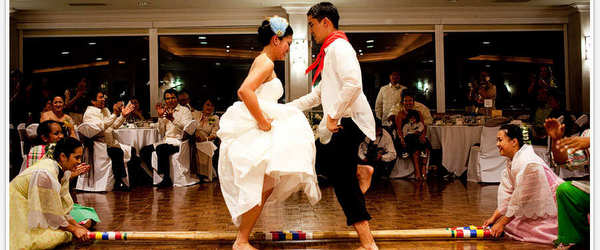
Some say that curiosity killed the cat but if you are planning on retiring to the Philippines, you should let your curiosity run wild! It is best to learn all you can about the Pearl of the Orient before you get here and if you are already here, it is a never ending saga in learning new things everyday. Even after 27 years with my personal Philippine connection and even after having lived here the past 4 years, I still learn new things about the islands of paradise.
Philippine traditions, customs and culture are in full tilt everyday of the week and are not only important during holidays, celebrations and special occasions. Being a foreigner, Filipinos do not expect you to know all of their traditions and customs or all about the Filipino Culture right away, however, the more you know and exhibit, the better off you will be. You will gain instant respect! Picking up some of the local language and using it from time time in your conversation will also result in big smiles when the locals recognize your attempt to pepper your conversation with their dialect. I am not fluent in Tagalog, the National Language of the Philippines, or in Ilonggo, which is the local language where I live in Negros Occidental. However, I know a lot of Taglish and Ilongish, which are both Philippine languages mixed with mostly English. I enjoy speaking both Taglish and Ilongish, where I throw in just enough words from both languages to keep the conversation lively and interesting to the local people.
Traditions, Customs and Culture
I could write a book about this topic and that is exactly what I plan doing in the very near future! Addressing people in the Philippines is always with respect. There are certain words of respect that Filipinos use when addressing or greeting others. Tito for Uncle, Tita for Aunt, Kuya for older brother and Ate for older sister. It is perfectly fine to address people who are older than you by these titles, even if they are not related to you. Many people call me “Tito Gary” or “Kuya Gary” and they are not all family members. I also feel like a Knight here in the Philippines at times because others refer to me as “Sir Gary!”
Most Filipinos eat using a fork and spoon when eating in restaurants but when at home, they often eat with their hands, which is traditional. This is known as “kamayan style.” Pizza is one of my favorite foods and I have noticed that our Filipino friends often use a fork and knife when eating pizza in restaurants. Our Filipino friends always notice that I eat pizza with my hands! I told them that it is perfectly fine to eat pizza with their hands in a pizzaria.
The photo is this feature article was taken at a Filipino wedding. The bride and groom are participating in one of the most traditional dances in the Philippines, tinikling. During this traditional dance, two long bamboo poles are handled by a person on each end. They coordinate tapping, beating and sliding the poles on the ground and against each pole while the dancers step over and in between the poles during their rhythmic dancing. Ouch! Be careful of your ankles when you try this dance.
Another interesting belief is blessing new, big ticket items with chicken blood! I recall when we had a new well drilled at our farm house in 2007 and one of the workers grabbed up one of our free range chickens and slit its throat. He proceeded making a circle around the well with the chicken blood to finalize the blessing. Afterward, the chicken was dressed, cleaned, grilled over hot coals and washed down with ice cold Gold Eagle Beer. I have witnessed the blessings of new houses and vehicles with chicken blood, although we did not opt for this tradition with our new house or vehicle.
When visiting a Filipino home, it is recommended not to arrive empty handed! Take something along to give the host or hostess and it does not have to be expensive items. Pastries and a bag of mangoes are very common and very much enjoyed by everyone. A bottle of wine or a bottle of Tanduay Rhum , yes correct local spelling for rum, is also often appreciated.
These are only a few examples of the everyday Philippine traditions, customs and culture that I often see while retired and living in the Philippines. There is never a dull moment and embracing the Filipino Culture, together with their customs and traditions, has been a very exciting part of my life for the past 27 years. Get ready for some everyday excitement once you make the move to the land of sunshine and smiles!